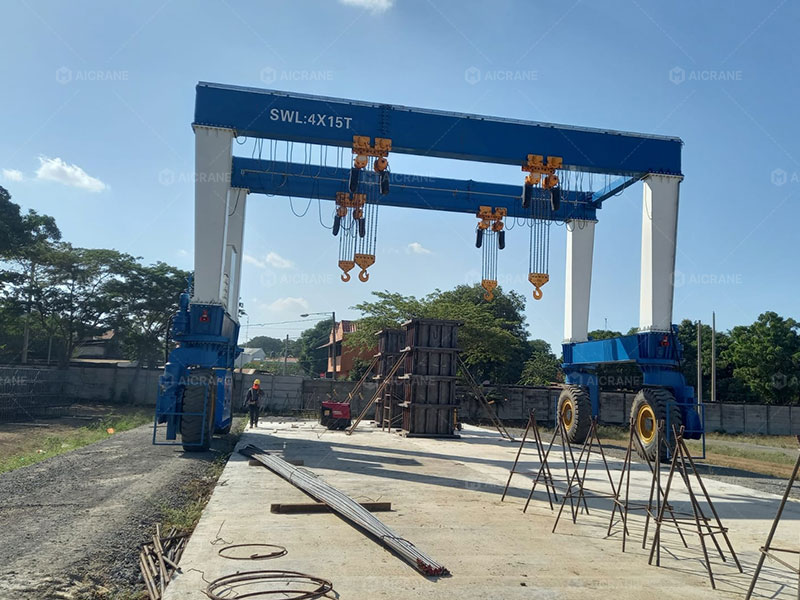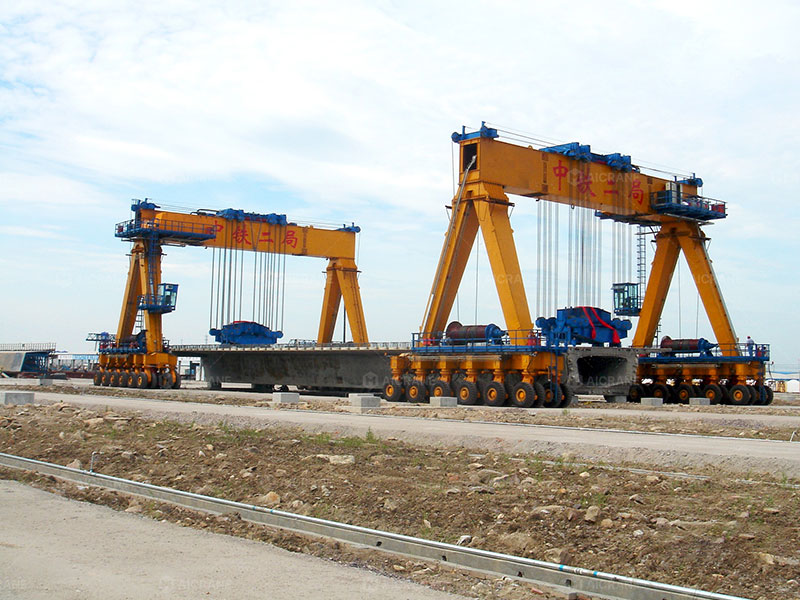Rubber tyred gantry (RTG) cranes are well-regarded for their mobility, flexibility, and efficiency in container yards and industrial environments. As material handling demands grow more complex, traditional single-lift operations are often insufficient – particularly when handling oversized or heavy loads, or when striving to increase terminal throughput. In such cases, dual-lift and tandem operation capabilities offer transformative benefits by enabling RTG cranes to move two containers or large components simultaneously. This article explores the technology, advantages, applications, and challenges of dual-lift and tandem RTG operations, helping terminal operators and industrial users understand how to maximize productivity and safety.

Understanding Dual-Lift Operation in RTG Cranes
Dual-lift operation refers to a single rubber tyred gantry crane equipped with a twin-lift spreader, capable of lifting two containers side-by-side (typically 20-foot containers) simultaneously. This functionality dramatically increases handling speed without increasing the crane’s footprint or requiring additional equipment.
Key Features of Dual-Lift RTG Cranes:
-
Twin-lift spreaders with telescoping arms to accommodate two 20’ containers or one 40’ container.
-
Advanced load sensors to ensure balanced lifting and load control.
-
Anti-sway mechanisms and smart control systems to maintain stability during dual lifts.
-
Hydraulic or electric drive systems strong enough to support increased load capacity.
Benefits:
-
Faster loading/unloading operations (up to 30–40% efficiency gains).
-
Reduced cycle times, leading to increased terminal throughput.
-
Lower operating costs by handling more cargo per lift.
-
Reduced wear and tear on crane systems due to fewer total lifting cycles.
What is Tandem Operation in RTG Cranes?
Tandem operation involves two RTG cranes working in coordination to lift a single large or awkward load that exceeds the capacity or dimensions of a single mobile gantry crane. Unlike dual-lift cranes (which involve one crane and two containers), tandem operations require:
-
Perfect synchronization of lifting, moving, and lowering activities.
-
Communication systems between crane operators or centralized control automation.
-
Load balancing mechanisms and interlocking safety protocols to prevent uneven load distribution.
Tandem operation is especially useful for precast concrete beams, steel structures, large machinery, or oversized shipping modules, which require careful handling and weight distribution.

Applications of Dual-Lift and Tandem RTG Operations
1. Container Terminals
-
Handling two 20ft containers at once with dual-lift RTGs significantly reduces congestion and increases productivity.
-
Tandem RTG operations may be used for shifting heavy transformer equipment, oversized flat racks, or breakbulk cargo loaded in special containers.
2. Precast Concrete and Infrastructure
-
Tandem-lift RTGs are used to transport long concrete beams, bridge segments, and girders in precast yards.
-
Two cranes can lift a component from opposite ends and transport it to the construction or storage area with precision.
3. Steel Yards and Industrial Plants
-
Steel coils, structural frames, and long pipe segments often require tandem lifting due to their weight and length.
-
RTGs are favored here because of their mobility, allowing movement across wide, unstructured yards.
4. Shipyards and Boat Handling
-
Tandem operation of mobile boat hoist is often used to handle boat molds, ship engine blocks, and other heavy marine components.
Technical Considerations for Dual-Lift RTG Design
1. Spreader Design
-
Twin-lift spreaders must support telescoping functions, strong locking mechanisms, and smart alignment systems.
-
Spreaders need to adapt to slight height discrepancies between two containers.
2. Crane Structure and Stability
-
The crane’s gantry structure must be reinforced to bear the additional load.
-
Counterweights or upgraded wheel assemblies may be required to ensure balance and smooth movement.
3. Drive System Capacity
-
The hoist motor and trolley systems must be rated for higher load capacities.
-
Energy recovery systems may be integrated to manage the additional energy requirements.
Synchronization and Safety in Tandem Operations
Tandem lifting demands precise coordination to avoid dangerous load shifting or crane misalignment.
Key Technologies Used:
-
Load synchronization software to ensure both RTG cranes lift and lower in unison.
-
Real-time communication links (wired or wireless) between crane controllers or operators.
-
Integrated anti-collision systems to prevent crane-to-crane contact during operation.
-
Positioning sensors and limit switches to guide crane motion and alignment.
Operator Training
Crane operators must undergo specialized training to manage tandem lifts, including:
-
Understanding joint center-of-gravity handling.
-
Coordination protocols for simultaneous controls.
-
Emergency response procedures in case of mechanical or control failures.
Challenges and Limitations
Despite their benefits, dual-lift and tandem operations present specific challenges:
1. Increased Capital Costs
-
Twin-lift spreaders and reinforced crane structures are more expensive than standard setups.
-
Tandem RTG systems may require software upgrades and control system enhancements.
2. Operational Complexity
-
Tandem lifts demand higher operator skill and careful planning.
-
Misalignment or asynchronous lifting can damage cargo or the crane structure.
3. Yard Layout Constraints
-
Dual-lift RTGs require sufficient space for side-by-side container pickup.
-
Tandem operations may be restricted in narrow lanes or areas with overhead obstructions.
Enhancing RTG Operations with Dual and Tandem Lifting Capabilities
Forward-looking container terminals, manufacturing plants, and infrastructure yards are increasingly adopting RTGs capable of dual-lift and tandem operation to handle a wider variety of loads, improve flexibility, and reduce turnaround times.
Recommendations for Deployment:
-
Assess lifting needs and load profiles to determine if dual-lift or tandem operation is viable.
-
Invest in training and automation to manage synchronization and ensure safety.
-
Upgrade infrastructure such as yard layout, crane controls, and spreader equipment to support enhanced functionality.
-
Monitor usage data and maintenance logs to optimize performance and reduce downtime.
Conclusion
Dual-lift and tandem operation capabilities mark a significant evolution in the functionality of rubber tyred gantry cranes. While dual-lift designs enhance container handling throughput with minimal operational changes, tandem operation expands the RTG’s role into heavy-duty and complex lifting tasks previously handled by fixed gantry or overhead cranes.
For operators and project managers seeking higher efficiency, adaptability, and performance in cargo handling, investing in advanced gantry crane for sale can offer substantial long-term returns – provided the systems are properly planned, synchronized, and safely executed.
